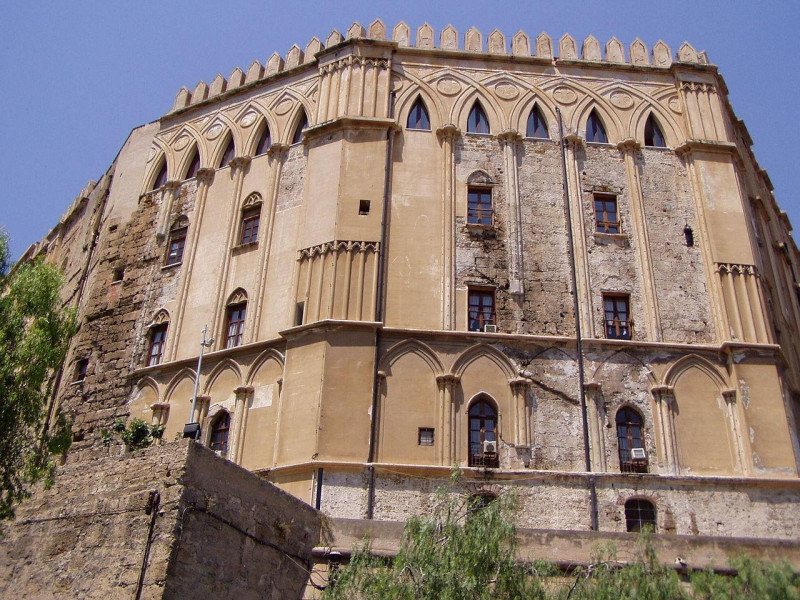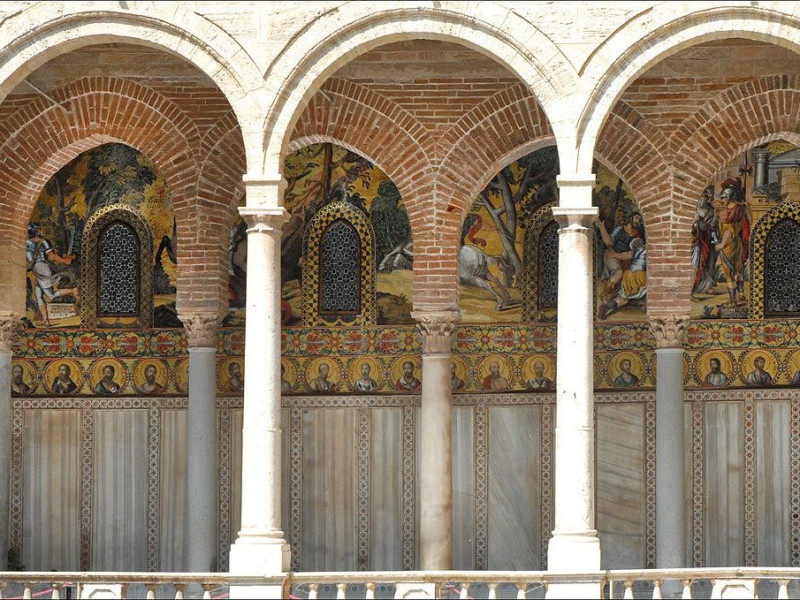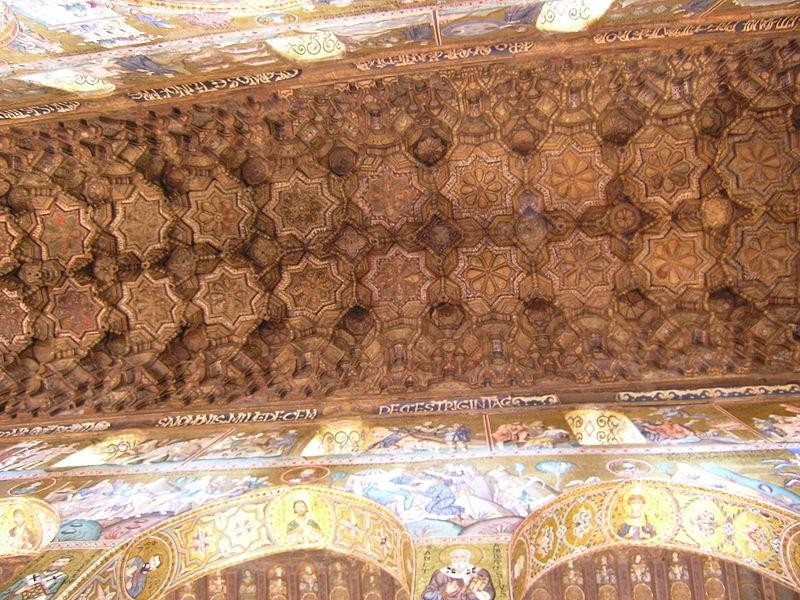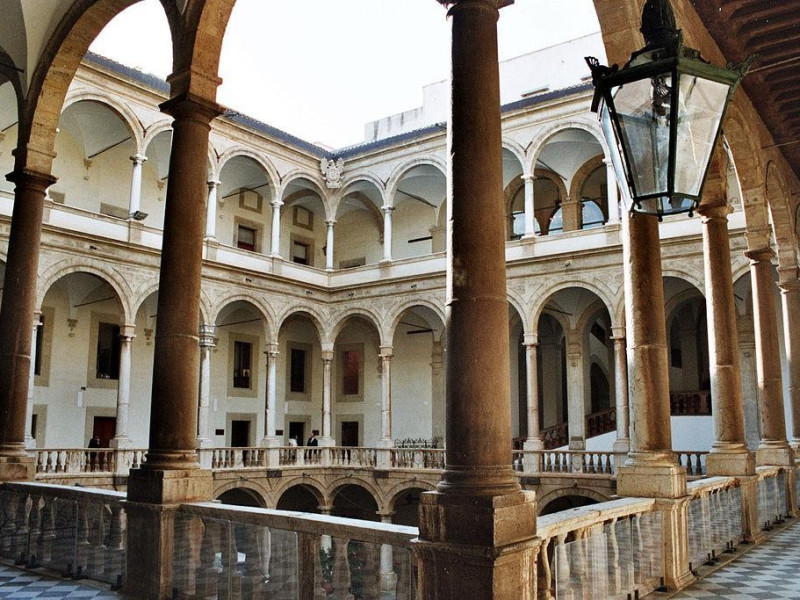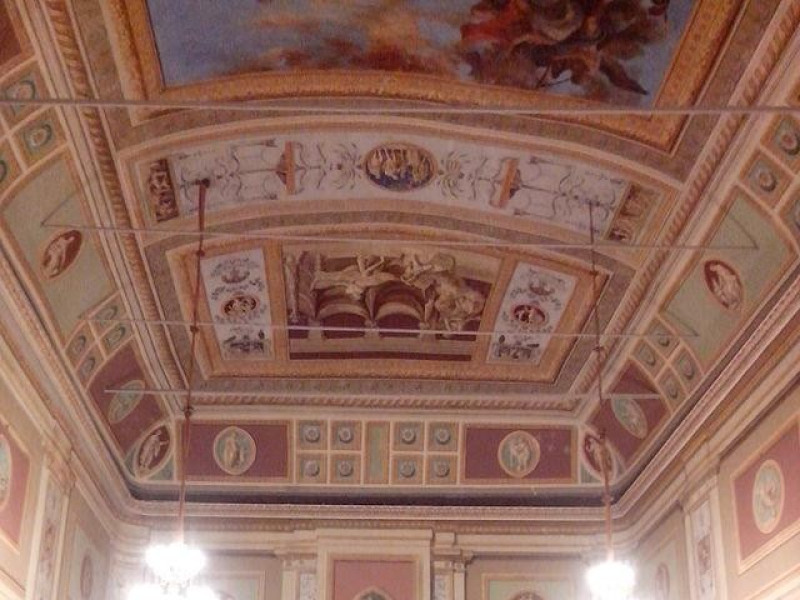Palazzo dei Normanni - Cappella Palatina
Norman Palace (also known as the Royal Palace), is the seat of the Sicilian Regional Assembly since 1947. Among the most visited monuments in the island, the building is the oldest royal residence of Europe, home of the kings of Sicily and Imperial seat with Federico II and Corrado IV. The first construction is attributed to the period of Islamic domination. The sovereign Normans turned the building into an Arab center and multi-purpose complex, creating a structure with multiple environments, directly connected to the Cathedral by a covered road. In 1132, under the reign of Roger II, it was built the famous Palatine Chapel. The Palace came to occupy an important role in the second half of the sixteenth century when the Spanish Viceroys elected it to their residence, with major renovations. The Bourbons realized boardrooms and did renovate the Hercules's Hall (so named for the frescoes dedicated to the hero's ventures). In the 30's they were carried out major renovations that have brought to light some Norman structures. The Palace is also the seat of Astronomic Observatory of Palermo. In addition to the Palatine Chapel, dating back to the Norman period also the Pisan Tower, home to the room of the Treasury; the Gioaria Tower, which houses the Armigeri Hall; the "Plan of Parliament"; the Hall of the Winds and the King Roger's Hall, decorated with mosaics of Byzantine school of hunting scenes. The halls are connected to so-called crypt by two side stairs. The crypt is actually a Byzantine church, made up of a room with a square plant underlying the presbytery. The Palatine Chapel, the flagship of the building, is a three-aisled basilica dedicated to St. Peter the Apostle. The naves are separated by columns in granite and marble in composite capitals supporting a structure of lancet arches, crowned by a dome of three apses. The dome, the transept and apses are entirely decorated with Byzantine mosaics, the most important in Sicily, representing the Pantocrator blessing Christ, the evangelists and biblical scenes. The wooden ceiling of the nave and the beams of the other aisles are decorated with carvings and paintings of Arabic style (muqarnas): in each segment there are wooden stars with representations of animals, dancers and scenes of court life and the Islamic paradise described in the Koran.
Info:
From Monday to Saturday from 8:15 am to 5:00 pm; Sundays and holidays 8:15/12:15 am.
